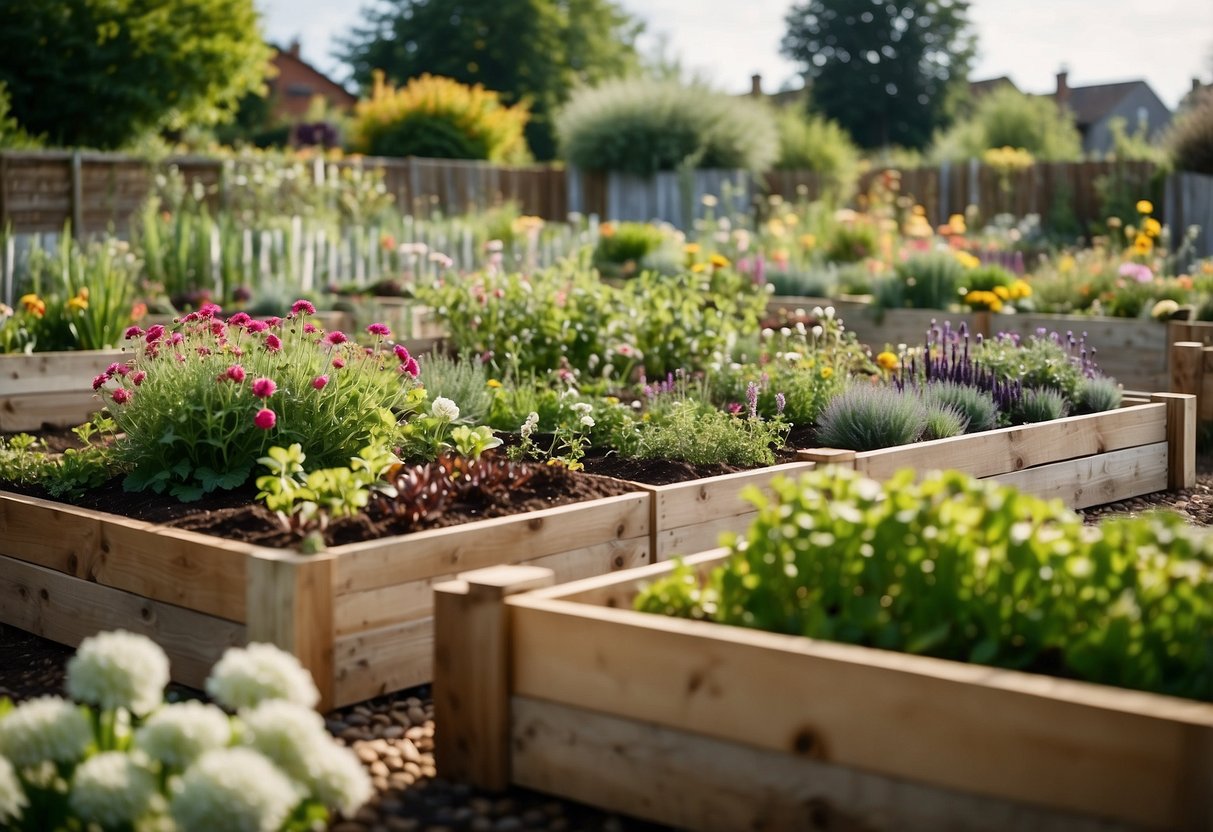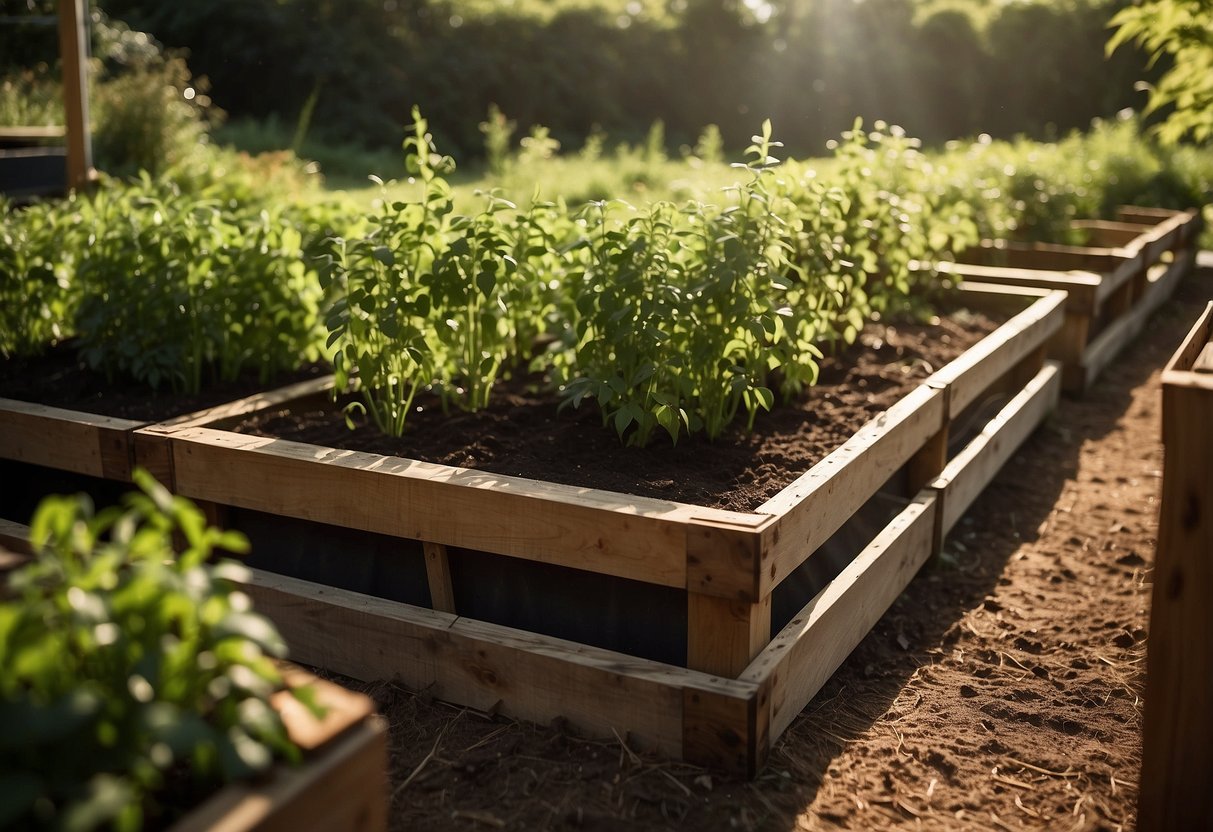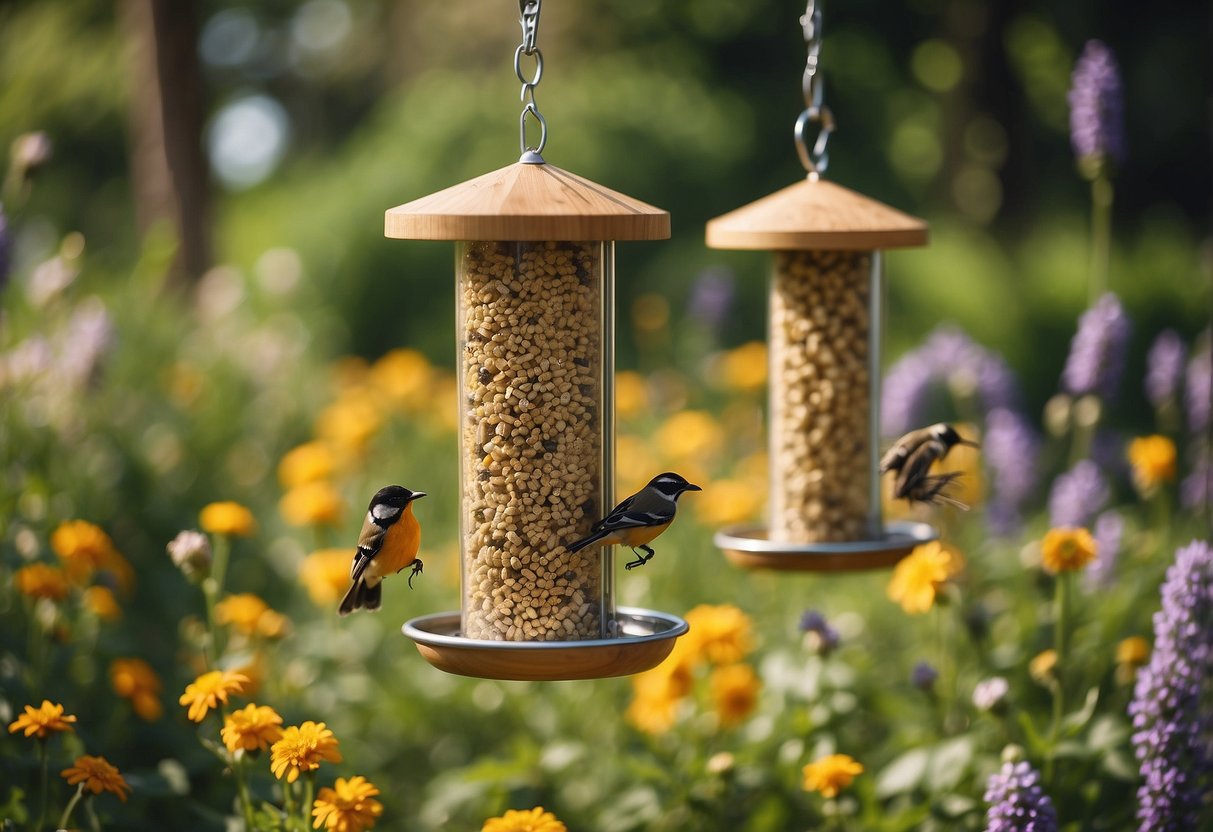Garden Ideas with Scaffold Boards: Creative DIY Projects for Your Outdoor Space
Using scaffold boards in your garden can be a fantastic way to both recycle materials and create beautiful, functional spaces. Whether you’re looking to build raised beds, benches, or unique garden features, scaffold boards offer a durable and rustic charm that fits well in any outdoor setting.

What can you create with scaffold boards to make your garden stunning? This article will explore various garden ideas, giving you inspiration and practical tips on how to get started. From simple raised beds to more intricate structures, there are plenty of ways to use these versatile materials to enhance your gardening experience.
1) Raised Garden Beds

Using scaffold boards, you can build raised garden beds that are both affordable and sturdy. Scaffold boards are perfect for this because they are strong and easy to work with.
First, measure your space and cut the boards to size. You will need four boards for the sides and some shorter pieces for supports.
Next, screw the boards together to form a rectangle. Make sure everything is square and secure. This will create the basic structure of your raised garden bed.
Fill the bed with soil and start planting. Raised beds with scaffold boards are great for growing all kinds of vegetables and flowers.
2) DIY Planter Boxes

You can make planter boxes easily with scaffold boards. Start by deciding on the size of your box. A common width for easy reach is around 90-100 cm.
Next, cut your scaffold boards to the desired lengths. Secure the boards together with corner braces for stability. Don’t forget to use untreated wood and add a hybrid wood protector for durability.
For a deeper bed, consider using full-length boards. Fill the planter box with compost-rich soil. Now, you’re ready to plant your favorite vegetables, herbs, or flowers.
Building your own planter boxes is a fun and rewarding project for your garden.
3) Outdoor Benches

Building outdoor benches with scaffold boards can add charm to your garden. You can use reclaimed boards to create a rustic look. These benches are durable and eco-friendly.
You’ll need a few basic tools and materials like cinderblocks and garden timbers. Check out this guide for some DIY garden bench ideas.
With some creativity, you can make unique benches that match your garden perfectly. Scaffold boards also allow for different designs and finishes, making each bench one-of-a-kind.
4) Garden Pathways

Using scaffold boards for garden pathways adds a rustic, charming look to your space. They are durable and can handle foot traffic well.
You can arrange the boards in different patterns, like straight paths or gentle curves, to suit your garden layout. Adding gravel or mulch between the boards can enhance the look and improve drainage.
To maintain the natural feel, consider using untreated scaffold boards. They will weather beautifully over time, blending seamlessly with your garden’s greenery. For more ideas on unique garden paths, check out these beautiful garden path ideas.
5) Vertical Planters

Vertical planters made from scaffold boards can add a unique touch to your garden. These planters are perfect for small spaces, allowing you to grow more plants without taking up too much room.
You can attach the scaffold boards to a wall or a fence. Adding planters to a slat wall made of scaffold boards will make your garden look fresh and organized.
Another idea is to build stackable planters. These can be easily moved and rearranged to suit your garden layout. Vertical planters are a simple way to enhance your gardening space.
6) Decking Boards

Using scaffold boards for decking creates a unique and rustic look in your garden. These boards are durable and can handle heavy foot traffic, making them perfect for outdoor spaces.
To install, ensure the ground is level and set posts into cement to support the frame. Use long screws to secure the boards with small gaps between each one. Treat the boards with stain or oil for extra protection, and you’ll have a beautiful, long-lasting deck. For more details, check this guide on how to build decking with scaffold boards.
Adding a flower bed or small step using scaffold boards can enhance the overall look. For inspiration, visit this site on DIY scaffolding board decking.
7) Compost Bins

Using scaffold boards to create compost bins is a smart and eco-friendly choice. These boards are sturdy and can handle the outdoor elements well.
To get started, gather some scaffold boards and decide the size of your bin. Many gardeners find that a 3′ x 3′ x 3′ bin works well for home composting (Old World Garden Farms).
You can add removable sliding front slats to make it easier to manage your compost (Old World Garden Farms). This feature helps you turn the compost and access the finished product.
8) Bird Feeders

Using scaffold boards to create bird feeders can be both practical and charming. You can make simple DIY wooden bird feeders by cutting scaffold boards into desired shapes and sizes.
Hang the feeders on sturdy posts or even trees in your garden. This setup not only provides food for birds but also adds a rustic touch to your outdoor space. Scaffold boards are durable, ensuring your bird feeders last a long time.
Consider adding decorative elements like mosaic tiles or painting the boards for extra character and visual appeal.
9) Trellises

Trellises made from scaffold boards can add a charming touch to your garden. They’re perfect for supporting climbing plants like roses, beans, and ivy.
To build a trellis, use scaffold boards as the frame. Attach wire or netting between the boards to give your plants something to grip.
You can position the trellis against a wall or use it as a garden divider. Consider painting the boards to match your garden theme. This adds both function and beauty. For more ideas, check out these DIY trellises.
10) Patio Furniture

Using scaffold boards, you can make sturdy and stylish patio furniture.
For example, a garden patio table can be made from these boards. You can cut them to your desired length and join them together to fit your space.
Consider building rustic garden benches to complement your table. They offer a charming touch to your outdoor area.
You can also experiment with sanding and waxing the wood to bring out the grain, adding a unique finish to your furniture.
Benefits of Using Scaffold Boards in Your Garden

Scaffold boards can be a great choice for your garden projects because they are both cost-effective and durable. These qualities make them an excellent option for building raised beds and other garden structures.
Cost-Effectiveness
One major benefit of using scaffold boards in your garden is their cost-effectiveness. These boards are often cheaper compared to other types of wood, making them a budget-friendly choice for gardeners.
Reclaimed scaffold boards, in particular, can be found at lower prices, allowing you to reuse materials that would otherwise go to waste.
Another advantage is the length and width of the scaffold boards. They are usually long and wide, reducing the need to join multiple pieces together. This saves both time and money.
By opting for scaffold boards, you can create large raised beds and other structures easily, without breaking the bank.
This makes your gardening projects not only affordable but also more environmentally friendly by reusing materials.
Durability
Scaffold boards are known for their durability, making them a great choice for your garden. These boards are designed to be strong, as they are used on construction sites to support heavy loads.
Because of this, they are sturdy enough to hold the weight of soil and plants in a raised bed.
Their thickness and strength ensure that they last longer compared to thinner wood options. This means you won’t need to replace them as frequently, saving both time and money in the long run.
Scaffold boards are often untreated, which can prevent exposure to harmful chemicals that may be found in other types of wood. This makes them a safer choice for your garden, especially if you are growing edible plants.
Using scaffold boards adds a robust and reliable element to your gardening projects, ensuring they stand the test of time.
Creative Garden Ideas Using Scaffold Boards

Scaffold boards can transform your garden with unique additions like raised beds and pathways. These materials are both durable and versatile, making them ideal for various garden projects.
Raised Garden Beds
Raised garden beds made from scaffold boards can help you grow plants more efficiently. These beds provide better control over soil quality, making them perfect for vegetables and flowers. To start, decide on the dimensions based on your garden space. Many people prefer beds that are around 90-100 cm wide for easy access.
You’ll need:
- Scaffold boards
- Screws
- Trellis stakes
Connect your boards to form the bed’s frame, and use stakes for added stability. Fill it with a mix of compost and manure, leaving a few inches from the top. Raised beds also help with drainage, preventing waterlogging in your plants. This makes your garden look neat and organized while being productive. For more tips, visit how to build a raised garden bed.
Garden Pathways
Garden pathways crafted from scaffold boards can bring a rustic charm to your outdoor space. These pathways guide guests and protect your plants from being trampled. First, measure the area where you want to lay the path. Cut the scaffold boards to fit this space.
Prepare the ground by leveling it and adding a layer of sand or gravel for drainage. Place the boards evenly on top, ensuring stability. You can arrange them in interesting patterns or keep it simple with straight lines.
Maintaining the pathways is easy. Sweep them regularly and treat the wood to prevent rot. Using scaffold boards for pathways adds character and functionality to your garden. Check out various designs at garden border ideas.
Maintenance and Care

Keeping your garden looking great with scaffold boards involves two main tasks: protecting the wood from weather and checking for damage.
Weather Treatment
Scaffold boards need to be treated to withstand the weather. Start by applying a waterproof sealant to the boards. This prevents moisture from soaking into the wood, which can cause rotting and warping.
You should reapply the sealant every year. Pick a dry day to do this so the sealant can dry properly. Staining is another option. It not only adds color but also provides extra protection against UV rays.
If you live in an area with harsh winters, you might want to cover your garden beds during the cold months. This helps protect the wood from snow and ice, extending their lifespan.
Regular Inspections
Inspect your scaffold boards regularly for signs of damage. Look for cracks, splinters, or mold. Small cracks can be filled with wood filler, while larger damage might need a board replacement.
Pay attention to the screws and nails holding the boards together. Tighten any that are loose to keep your garden bed stable.
Check for pests, like termites, that can damage the wood. If you find any, treat the area with an appropriate pesticide. Regular inspections can catch problems early, saving you time and money in the long run.







